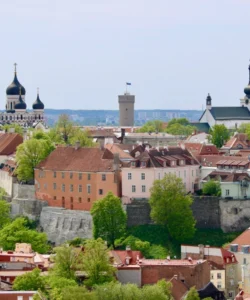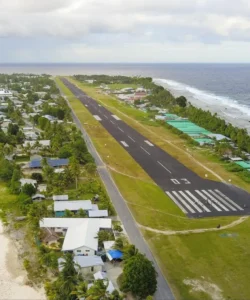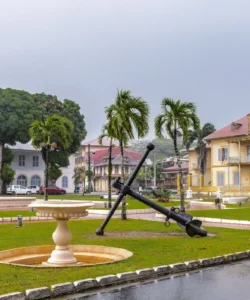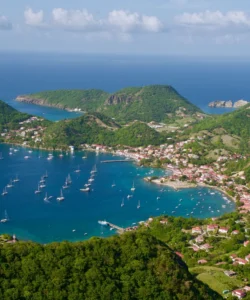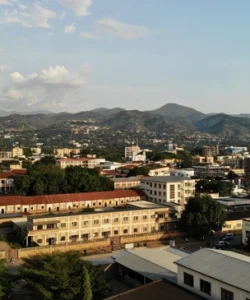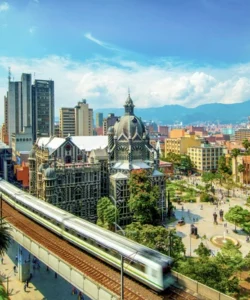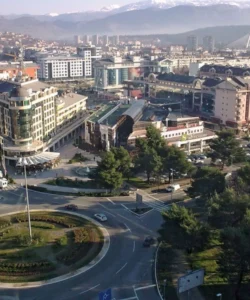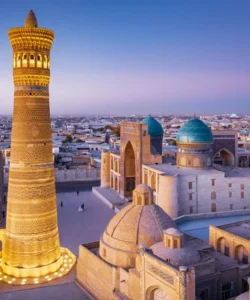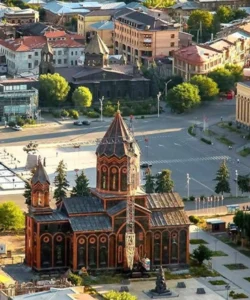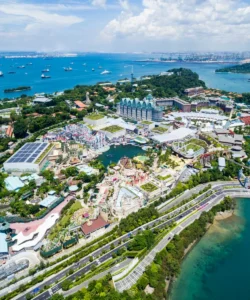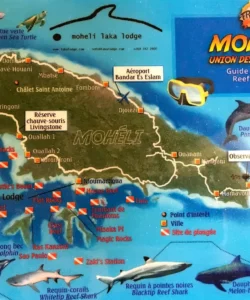Botswana is mostly a flat country. Its most significant geographical feature is the Kalahari Desert, a vast, semi-arid sandy savanna that covers about 70% of the country. Despite its name, it isn’t a true desert but rather a “thirstland,” as it supports a surprising amount of vegetation and wildlife. The northwestern part of the country is home to the Okavango Delta, the world’s largest inland delta. It is formed by the Okavango River, which flows into a tectonic trough in the Kalahari Desert rather than into an ocean. The delta’s seasonal flooding creates a unique wetland ecosystem that is a haven for wildlife. The climate in Botswana is semi-arid, with hot summers and mild, dry winters. The rainy season is from October to April, but rainfall is often sporadic and erratic, making droughts a recurring challenge.
Listen to an introduction about Botswana
![]()
Area: Approximately 581,730 square kilometers (224,610 square miles).
Population: The total current population for Botswana in 2025 is estimated to be 2,763,338.
Language: The official languages are English and Setswana. Setswana is the national language and widely spoken.
Currency: Botswana Pula (BWP).
Religion: The majority of the population is Christian (86.5% according to the 2022 census). Other religions include African traditional religions (4.6%), no religion (7.1%), Islam (0.6%), and Hinduism (0.2%).
Capital: Gaborone.
Major Cities: Besides Gaborone, other notable towns include Francistown, Maun, and Kasane.
Attractions & Wonders:
Botswana is a top safari destination, offering exceptional wildlife viewing and diverse ecosystems. Key attractions include:
- Okavango Delta: A UNESCO World Heritage Site and one of the world’s largest inland deltas, known for its stunning beauty and abundant wildlife, explored by mokoro (traditional dugout canoes) or boat safaris.
- Chobe National Park: Famous for its large herds of elephants and buffaloes, as well as a rich birdlife. Game drives and boat tours on the Chobe River are popular activities.
- Moremi Game Reserve: Located in the Okavango Delta, it’s known for its varied safari activities including game drives, mokoro excursions, and night drives.
- Central Kalahari Game Reserve: A vast wilderness area offering a true remote safari experience.
- Kgalagadi Transfrontier Park: A large conservation area shared with South Africa, known for its predator sightings and desert-adapted wildlife.
- Makgadikgadi Pans National Park: A vast complex of salt pans, including Nxai, Nwetwe, and Sua Pans, home to unique baobab trees (like Baine’s Baobabs) and Kubu Island. It offers a surreal experience, especially sleeping out on the pans under a blanket of stars during the dry season.
- Tsodilo Hills: A UNESCO World Heritage Site with over 4,500 ancient rock art paintings, providing insight into ancient Southern African culture.
- Khama Rhino Sanctuary: A haven for rhinos.
- Gcwihaba Caves: A hidden natural treasure.
Architecture:
Botswana’s architecture is a mix of traditional and modern styles. Traditional building practices often involve using local materials like mud bricks, stone, and thatch roofs. These structures historically featured wooden skeletons with pin joints and thick walls for insulation and natural ventilation. Modern architecture in cities like Gaborone incorporates contemporary designs and materials, with a growing trend to blend traditional elements into modern buildings, particularly in hotels and tourist centers to create a sense of place.
Roads:
As of 2022, Botswana’s total road network measured 32,564.8 km. The network consists of a mix of bitumen (paved), gravel, earth, and sand/track roads. The government is focused on improving infrastructure, with public infrastructure investment expected to support growth in the construction industry, particularly in water infrastructure. A railway line runs from Lobatse to Francistown, passing through Gaborone.
Hotels & Restaurants:
Botswana caters to a range of travelers, from luxury safari lodges in its national parks and reserves to mid-range and budget accommodations in towns. Gaborone, as the capital, is developing as a MICE (Meetings, Incentives, Conferences, and Exhibitions) hub with upmarket hotels and restaurants. In safari areas, lodges often provide full-board and all-inclusive experiences. Dining options in urban centers offer both local and international cuisine.
Cuisine:
Botswana’s cuisine reflects its cultural diversity. Traditional dishes often feature meat, especially beef, as cattle farming is significant. Seswaa is a national dish, a slow-cooked, pounded meat dish. Other staples include pap (maize porridge), bogobe (porridge made from sorghum, maize, or millet), and various vegetables. Wild game might also be found. Modern fusion dishes are increasingly popular, especially in urban areas.

